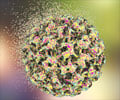Yale School of Public Health, working with the Connecticut Department of Public Health, will monitor the early impact of a vaccine against the most common sexually transmitted disease in the United States and the leading cause of cervical cancer—human papillomavirus virus (HPV).
More than 20 million people are currently infected with the virus, and 6.2 million new infections are diagnosed each year. Most HPV infections are cleared by the immune system, but some persist, causing pre-cancerous lesions known as CIN2/3 and, ultimately, cervical cancer. Half of the more than 30 known sexually transmitted strains of HPV are considered high-risk types linked to cervical cancer.The vaccine GARDASIL™ was licensed for females nine-to-26 years old to prevent HPV-related cervical cancer, cervical, vaginal, and vulvar cancer precursors, and anogenital warts. The vaccine targets the strains HPV16 and HPV18 that are thought to cause 70 percent of cervical cancers. It also targets strains HPV6 and HPV11 that cause 90 percent of genital warts.
To monitor the early impact of the HPV vaccine, the Yale office of the Connecticut Emerging Infections Program will survey pathology laboratories and health care providers for information about new CIN2/3 diagnoses among women in New Haven County. The goal is to determine whether there has been a decrease of new diagnoses since the introduction of the vaccine.
“We expect to see the greatest impact among young women, but over time we also expect to see effects for women over 26 who were vaccinated at a younger age,” said Linda Niccolai, assistant professor and director of the project under the emerging infections program Niccolai said. “Also, there will presumably be less transmission to male partners, who can re-infect their partners.”
Niccolai notes that if it can be shown there are fewer pre-cancerous lesions due to vaccination, the vaccine might be made more widely available.
“Perhaps structural and financial policy changes also will be made to increase accessibility for those who want the vaccine,” said Niccolai.
Advertisement
James Meek, associate director of the emerging infections program, said another goal is to watch for possible changes in the strain of the virus responsible for the pre-cancerous lesions.
Advertisement
Source-YALE University
LIN/P









